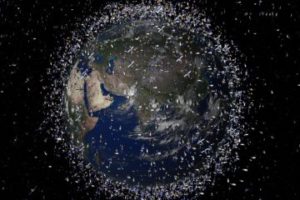
Japan’s experimental ‘space junk’ collector designed to drag space junk out of orbit has failed to accomplish its objective, according to Japanese scientists.
The space junk collector was built and launched by the Japan Aerospace Exploration Agency (JAXA).
Scientists believe over 100 million garbage pieces, including pieces of rockets and cast-off equipment from old satellites, are orbiting the Earth. According to scientists, this space junk – generated in the past five decades as a result of than five decades of human space exploration – could pose a threat to future space exploration missions.
Japanese scientists decided to do something about that and built a space tether – made from thin wires of stainless steel/aluminum – to pull space junk from the Earth’s orbit. This electrodynamic tether was built by JAXA with the help of a fishing net company. Scientists believed this 700 meter long space tether would slow down the junk in the orbit, and bring it into a lower orbit. Scientists also believed that the clutter – after entering the Earth atmosphere – would burn up without causing any harm.
In December last year, Japanese space agency had launched a cargo ship Kounotori 6 carrying supplies for astronauts at International space station, and the tether was due to be extended out in space from that cargo ship during its return flight.
According to JAXA, something has gone wrong, and Kounotori 6 could not release the cable in space. JAXA was unable to fix the problem before spacecraft returned to Earth’s atmosphere this morning.
“We could not extend the cable, but we think it is not because of the cable itself, but some other reasons,” a spokesperson for JAXA told New Scientist.
“A detailed analysis is underway.”
“Releasing a cable may seem simple, but nothing in space is simple,” says Sean Tuttle at the University of New South Wales in Australia.
“The tiniest thing can upset the whole system and you can’t just go up there and readjust things.”
Tuttle says the failure of this test should be seen as a setback rather than a nail in the coffin for junk-removing cables.
“There are several theoretically viable candidates for removing debris, but no one has actually shown one to work in space yet,” he says.
“The sooner we get something to work the better.”
JAXA is not the only space agency in the world that is working on space junk-removing technology. The UK has plans to try nets and harpoons in 2017, and the ESA has also revealed its plans to test nets or robotic arms in 2023 to remove space junk.